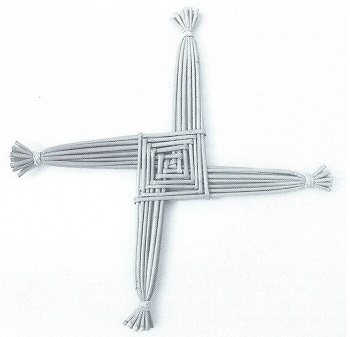
A Saint Brigid’s CrossIn January 2022, the Irish Government announced an additional annual public holiday to thank citizens for all their sacrifices and work during Covid, and to remember those that lost their lives in the pandemic. This year the additional day is on March 18 to make a long weekend as the previous day, St Patrick’s Day, is already a public holiday. From 2023, the new public holiday will fall on the first Monday of February and celebrate St Brigid, the patroness of Ireland, one of the three national saints with Saints Patrick and Columba. This will bring the number of public holidays in Ireland to ten. As provided for in the Organisation of Working Time Act 1997, the existing nine public holidays are January 1 (New Year’s Day), St Patrick’s Day, Easter Monday, the first Mondays in May, June and August, the last Monday in October, Christmas Day and St Stephen’s Day. In respect of each, an employee is entitled to a paid day off on the holiday, or another paid day off within a month, or an extra day’s annual leave, or an extra day’s pay, as the employer may decide. If a public holiday falls on a Sunday the next day becomes the public holiday, and in respect of Christmas Day, the following Tuesday. Part-time employees must have worked at least forty hours in the five weeks before the public holiday to qualify for payment.
The first is celebrated in Ireland as St Brigid’s Day, a date originally associated with the pre-Christian festival known as Imbolc, which marked the start of Spring and growth. From early Christian times in Ireland, the date became the feast day of St Brigid, the most renowned female saint in the country. Many miracles were attributed to her. From that time, it became traditional for each family to make and display a Saint Brigid’s Cross, a small cross made with rushes. Straw and small sally rods were also used to make Saint Brigid’s crosses and there were a number of different designs. The origin of the tradition is said to have begun when a local chieftain in Kildare was ill and Brigid went to see him. She soon realised that he was dying and decided to speak to him about Christianity. While doing so, she picked up rushes from the floor of the house and knitted them into a cross. He asked her what she was doing. She placed the cross in his hands and explained to him about Jesus, His crucifixion and resurrection. When told of its symbolism, the dying person asked to be baptised. Shortly after his baptism, he died. Afterwards Saint Brigid came to be associated with hope, renewal and growth.
In Ireland it was traditional to place a Saint Brigid’s Cross over a doorway in the belief that it protected a house from fire and saved its inhabitants from any harm. Saint Brigid’s Cross became one of the symbols of Ireland with the harp and shamrock. Today the custom is kept alive in Ireland, especially with primary schools playing big roles in observance of this custom. It is still customary to see a Saint Brigid’s Cross in many homes.
It is believed that Brigid (c. 451-524) was born in Faughart, about 3km north of Dundalk, in County Louth, where there is now a Saint Brigid stone and pillar as well as holy well. It is still a place of pilgrimage. After becoming a nun, Brigid became a great Christian leader and founded a number of monasteries, especially one in Kildare where she spent a big part of her life. Brigid is said to have established the first community of women dedicated to religious life in Ireland at Kildare. She is said to have founded two communities there, one for women and the other for men. Kildare developed into an important monastic foundation in early Christian times. It is believed that Saint Brigid died there. Many place names in Ireland are called Kilbride, the church of Brigid, in her memory. Henceforth, St Brigid will be remembered in a special way in Ireland on the first Monday of February each year.
